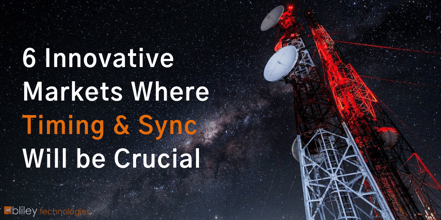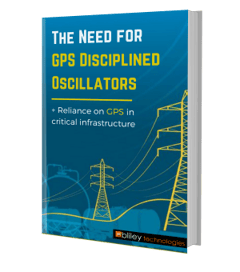5G Wireless is Right Around the Corner thanks to mmWave
Fifth generation wireless systems are not far from becoming a reality, thanks to recent research being done on the millimeter wave (mmWave) radio spectrum.
Experts agree the way forward is to manufacture mass deployable wireless devices across a range of markets and for different applications. Among other things, these applications include mobile computing and data processing over networks. The technology also has applications in the field of medicine and healthcare.
Read More
Topics:
engineering,
RF Technology
Precise timing across a variety of networks and industries is becoming a necessity. Both operationally and legally. It's actually pretty amazing to see the evolution of timing & frequency control throughout different industries. There's been significant timing innovations over the past 5-10 years alone.
Read More
Topics:
Clocks & Crystals,
RF Technology
Since the beginning of NASA, radio communication has been the go-to method of communication for spacecrafts. Well, that's about to change. NASA has recently announced they will be making a major change to some of their upcoming communication systems by implementing new, cutting-edge, laser communication technology.
Read More
Topics:
RF Technology,
Space & Satellites
A Berlin-based team known as PTScientists (Part Time Scientists) will be celebrating the 50th anniversary of the Apollo 11 moon landing in high-style in 2019. The group was a participant in the private race to the moon, the Google Lunar X Prize, which will wrap up this year without a winner. Their mission for 2019? To bring a 4G wireless mobile network to the moon!
Read More
Topics:
Press Release,
RF Technology
When radar was first used in combat, it represented what is known as a “Revolution in Military Affairs” (RMA), a term used to describe a tactical, doctrinal, strategic, or in this case, technological change in military theory and activity that fundamentally changes the nature of warfare. World War II saw the first widespread use of radar on both sides of a conflict, and led to the emergence of electronic warfare as a method of counteracting the other side’s radar abilities while defending the friendly use of the electromagnetic spectrum. This competition spawned the evolution of many different radar functions for specialized applications. This article will explore various types of radar systems that exist and the functions they serve.
Read More
Topics:
RF Technology,
Military & Defense,
Defense & PNT
Can you hear that?! ...Listen closely. Can you hear it now??
...Those are Christmas bells jingling in the distance because the holiday season is here once again!!!
Read More
Topics:
engineering,
RF Technology,
General Topics
While the expansion of the private sector into space is still in its infancy, there is little doubt that it will prove to be one of the most significant economic developments of this century, and RF engineers are one group of industry specialists that are making it happen. Indeed, it's almost impossible to overstate the impact that engineers specializing in radio frequency tech have had and will continue to have, not only with operating and maintaining commercial space activity but shaping it as well. Let’s explore all the different ways that RF engineers are making the “Space 2.0” era possible.
Read More
Topics:
engineering,
RF Technology,
Space & Satellites
So much of what defines our modern lives is made possible through radio wave technology, which has changed the world in ways the first researchers could never have anticipated. But where did anyone get the idea that radio waves existed in the first place, and that they could be harnessed for wireless communication? It’s a fascinating story that continues to unfold to this day. Let’s go back to the beginning to understand how this technology has evolved.
Read More
Topics:
RF Technology,
Space & Satellites
The Internet of Things (IoT) is a broad term which encompasses the multitude to wirelessly connected devices that surround us. It applies not only to smartphones and tablets, but to millions of machines, devices, and new twists on traditional products which were previously not connected to the internet. But what makes it all possible? How do these devices connect to the internet and communicate with each other?
Read More
Topics:
IoT,
RF Technology















